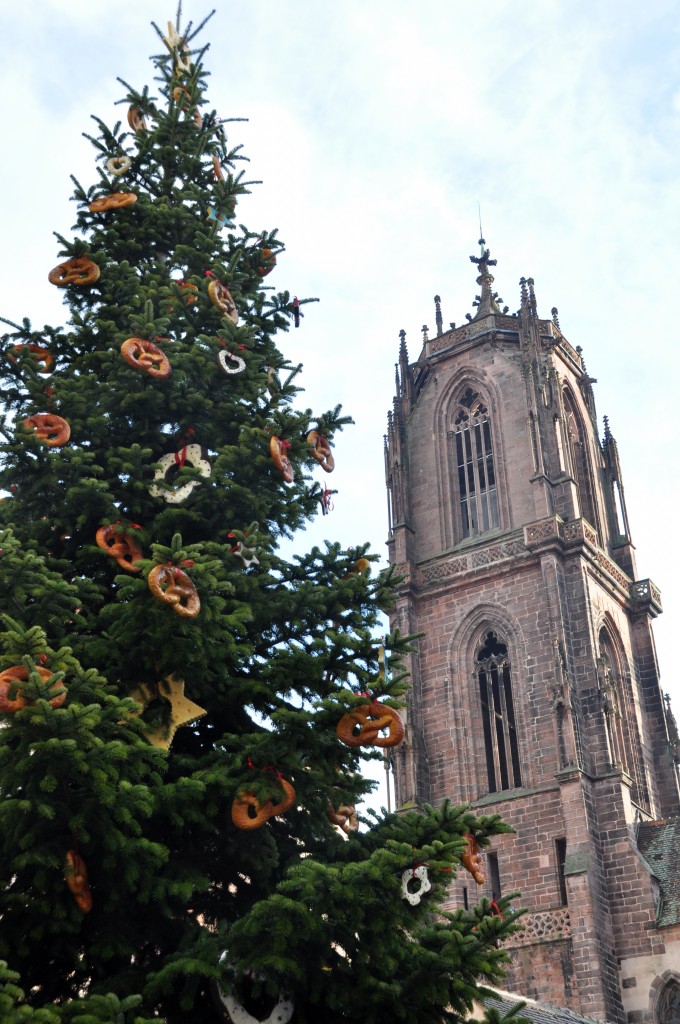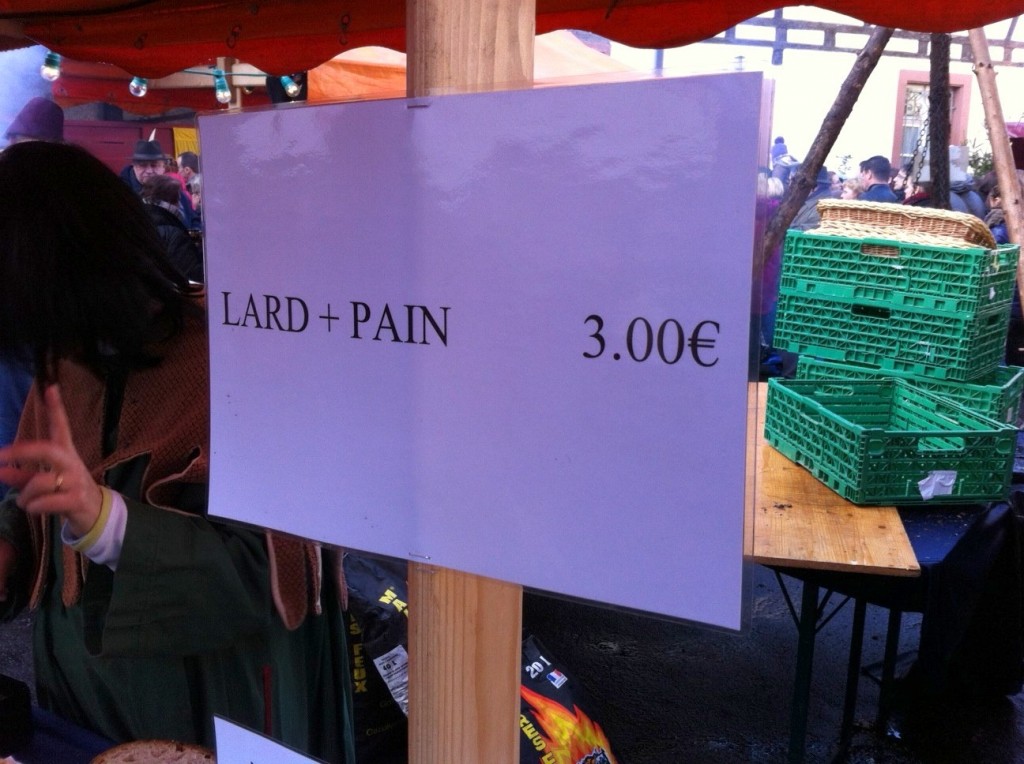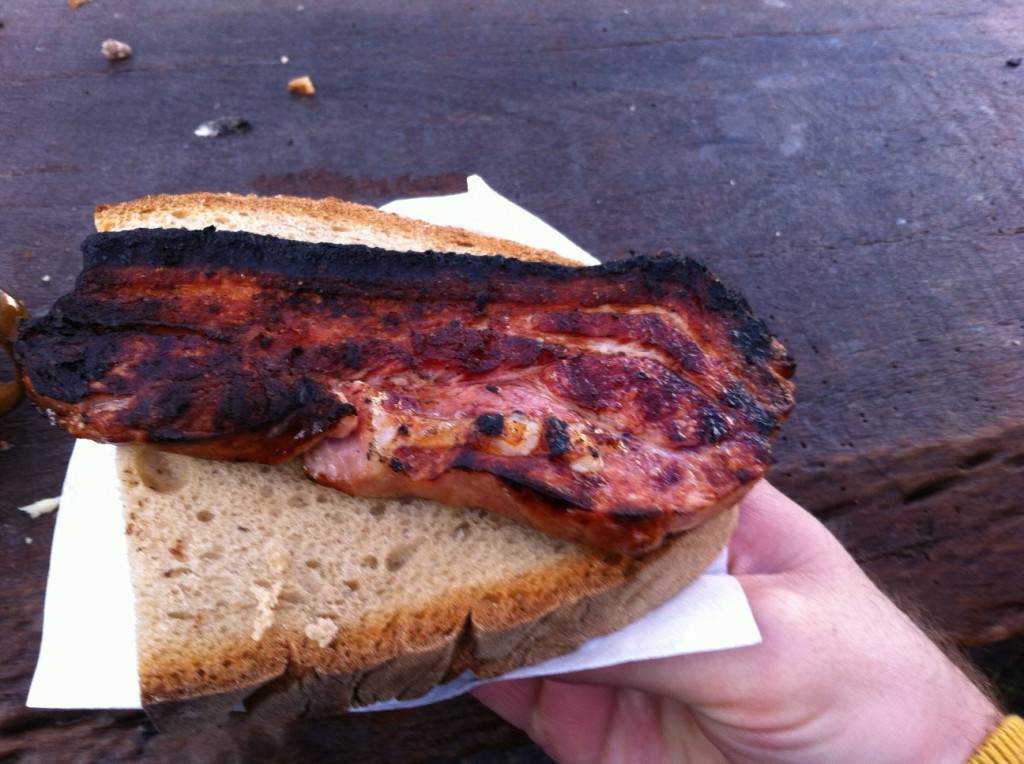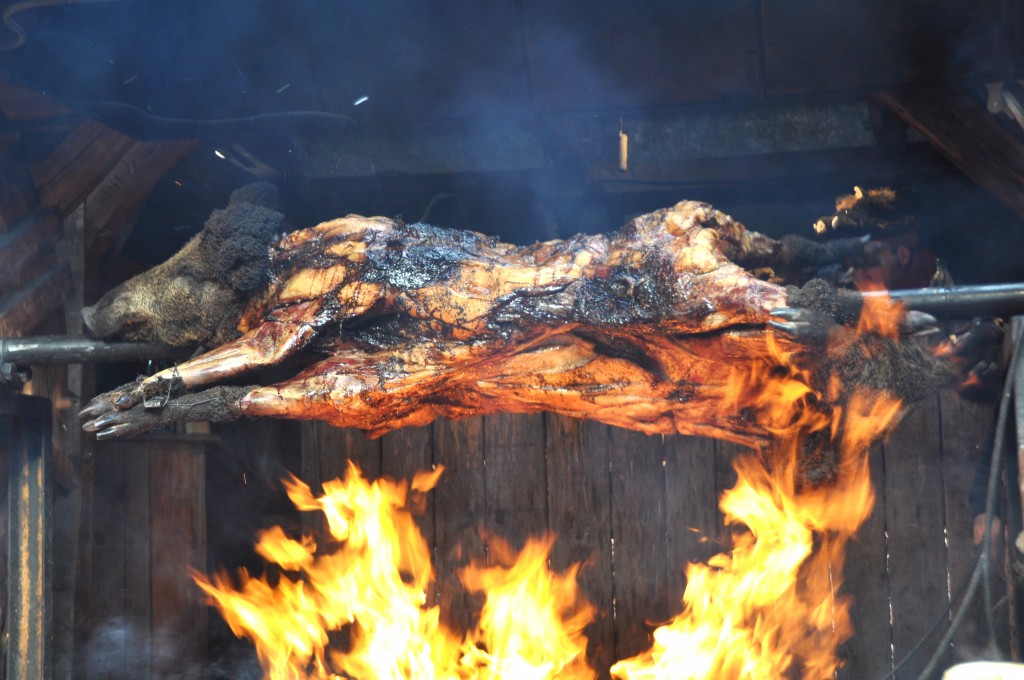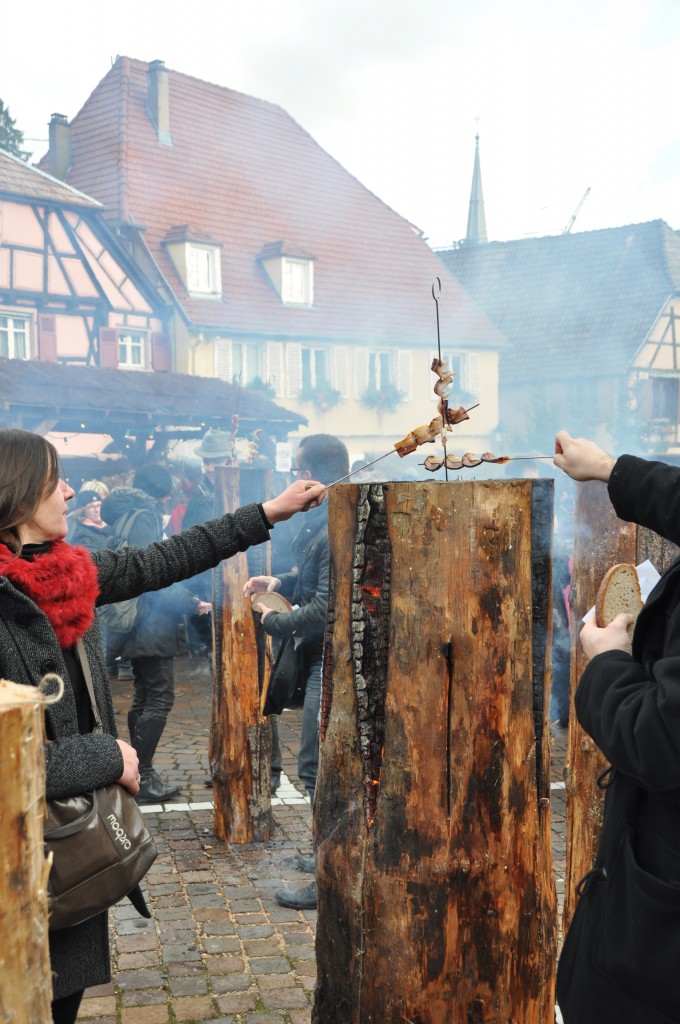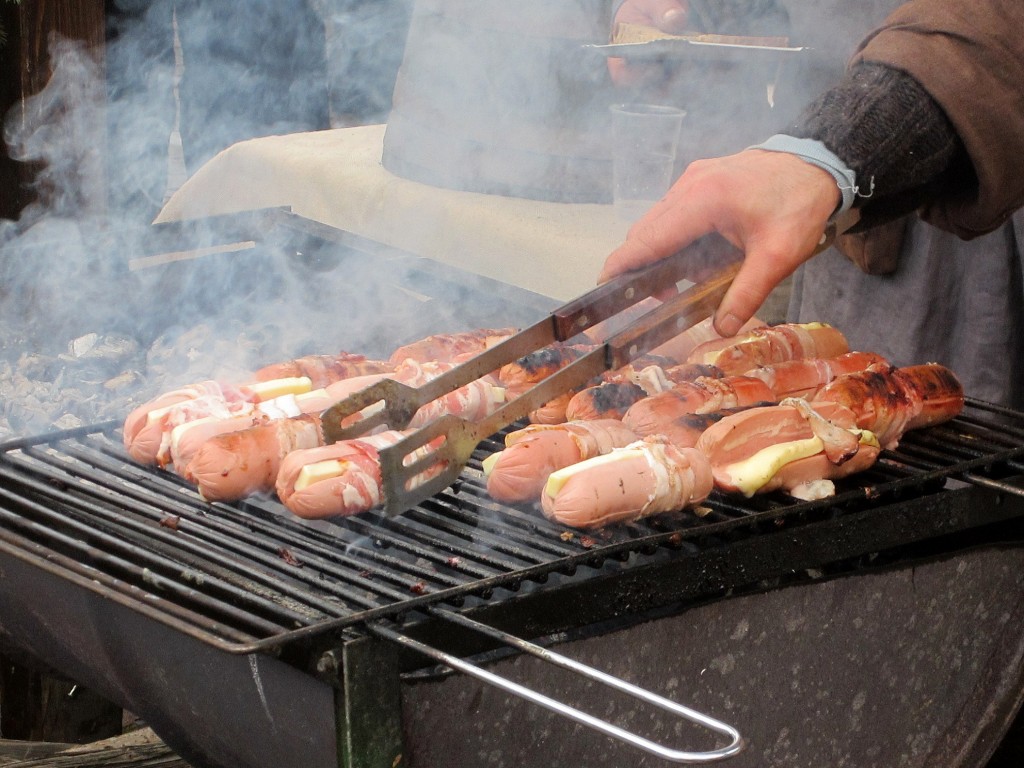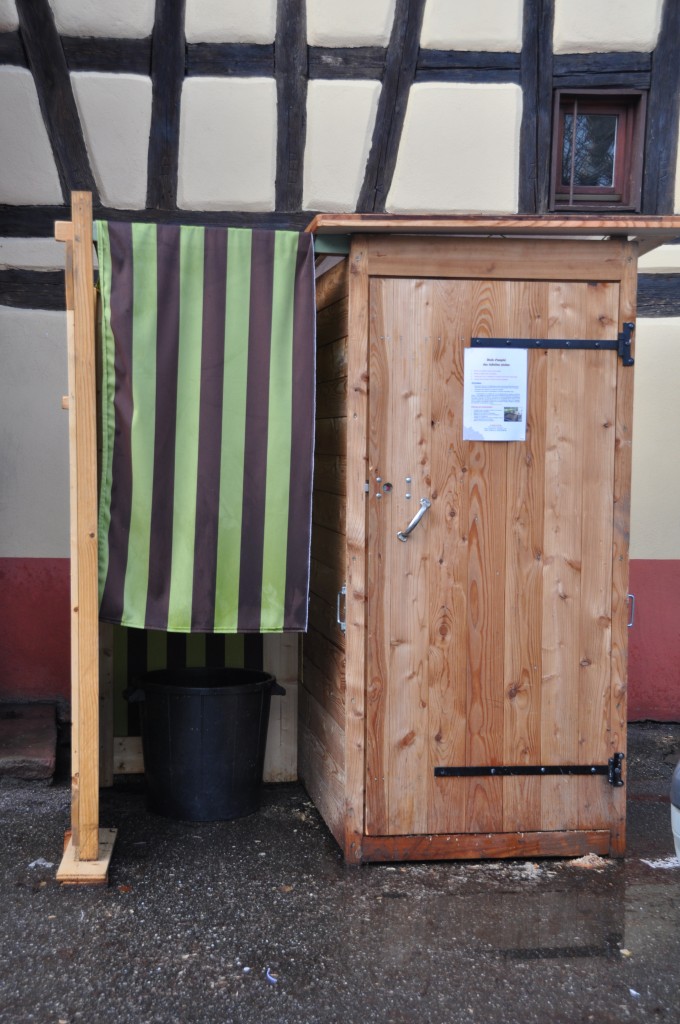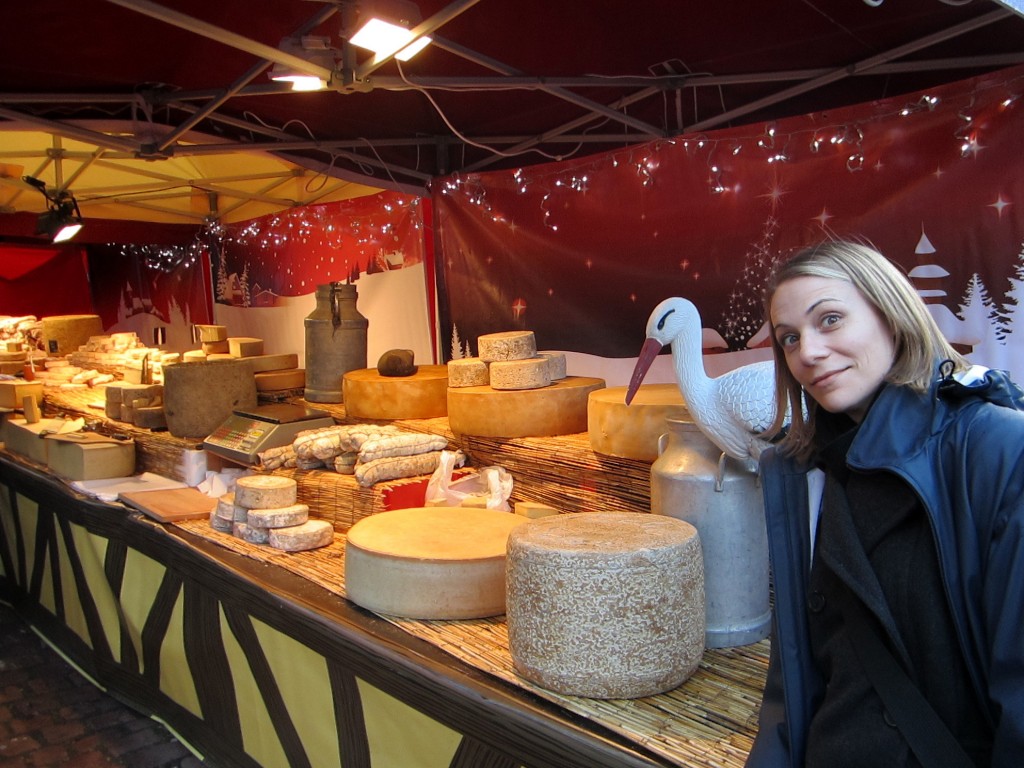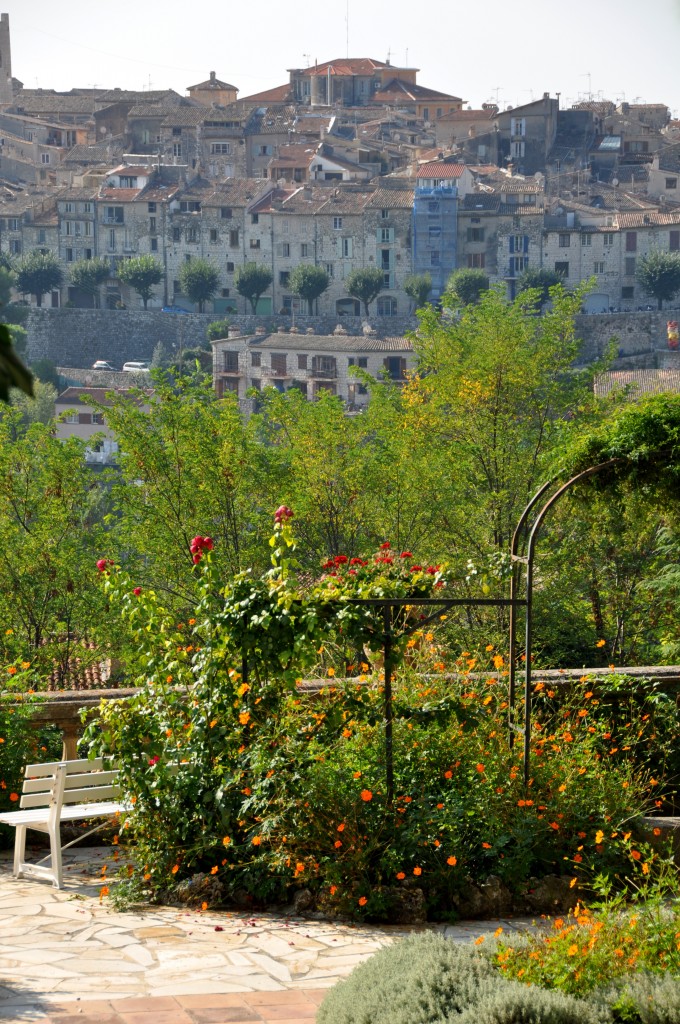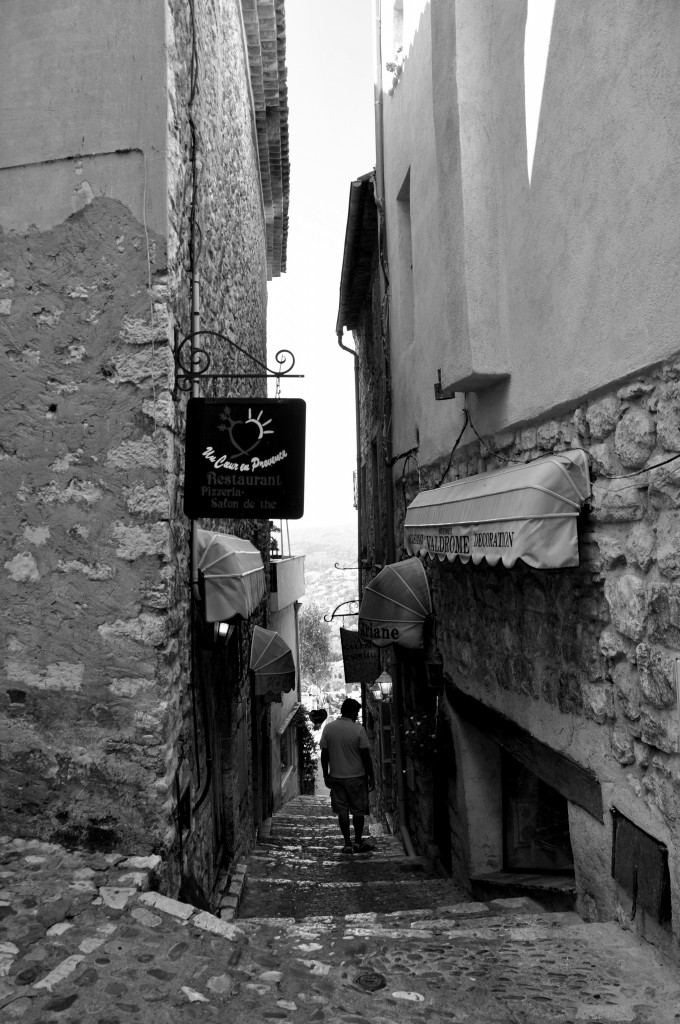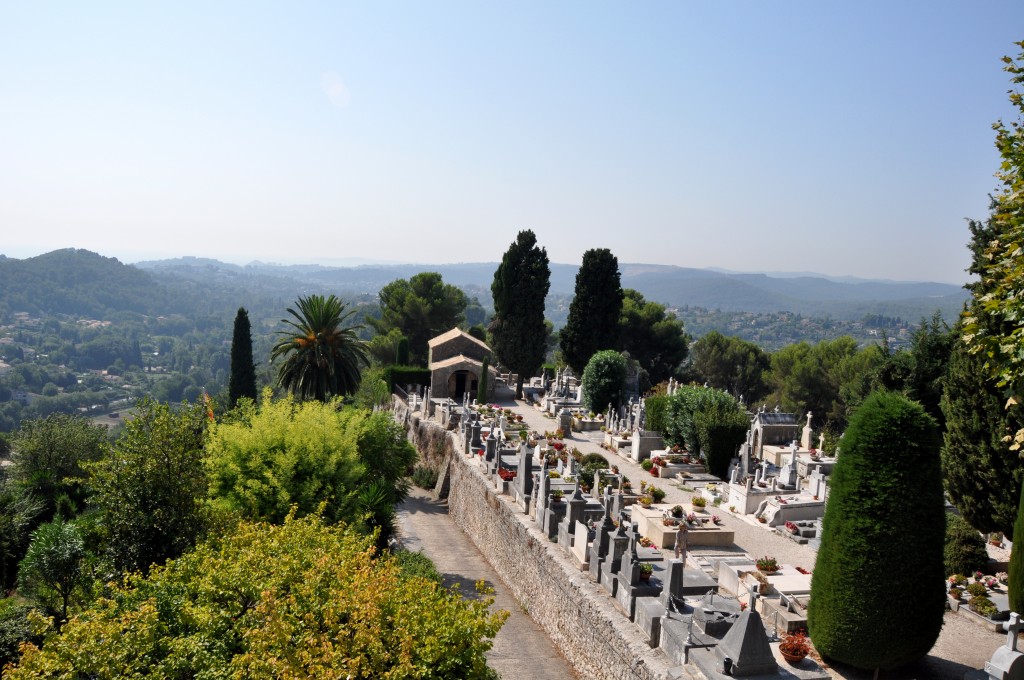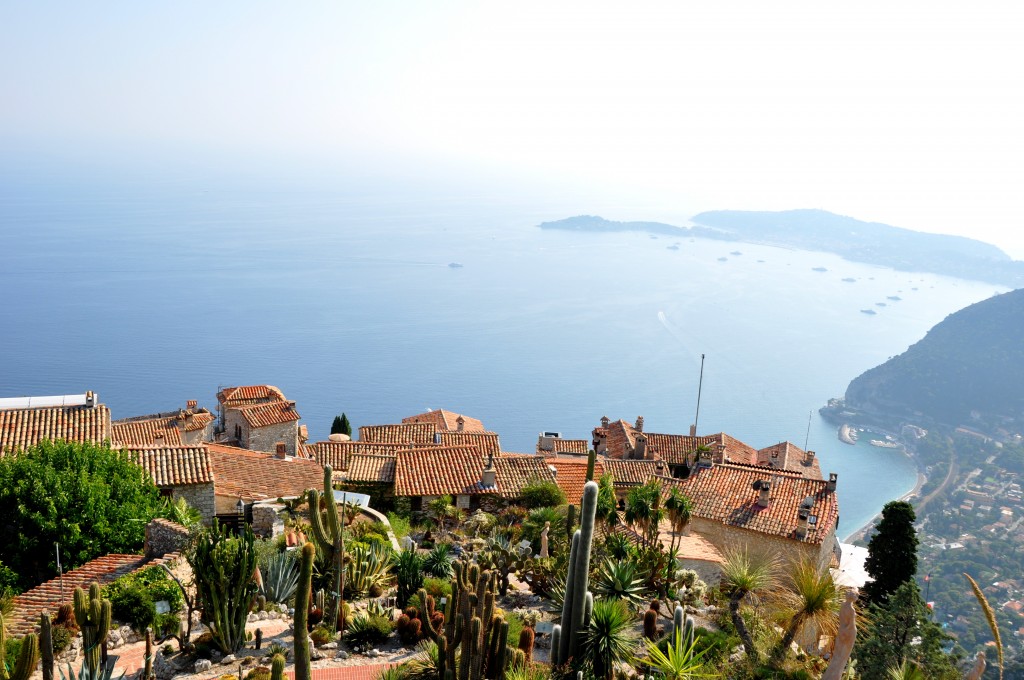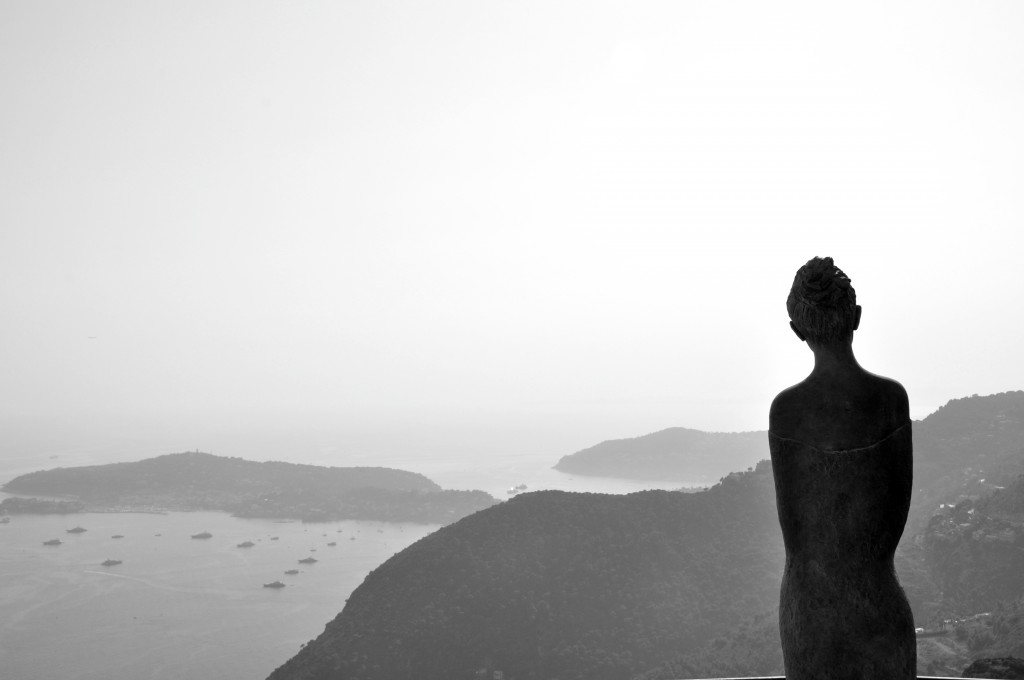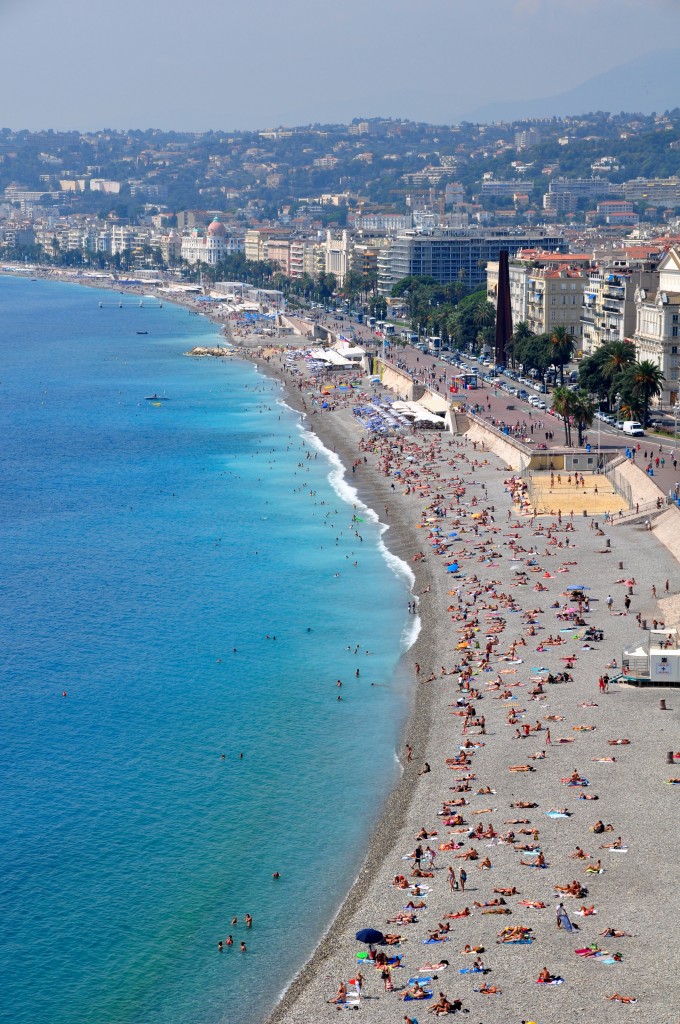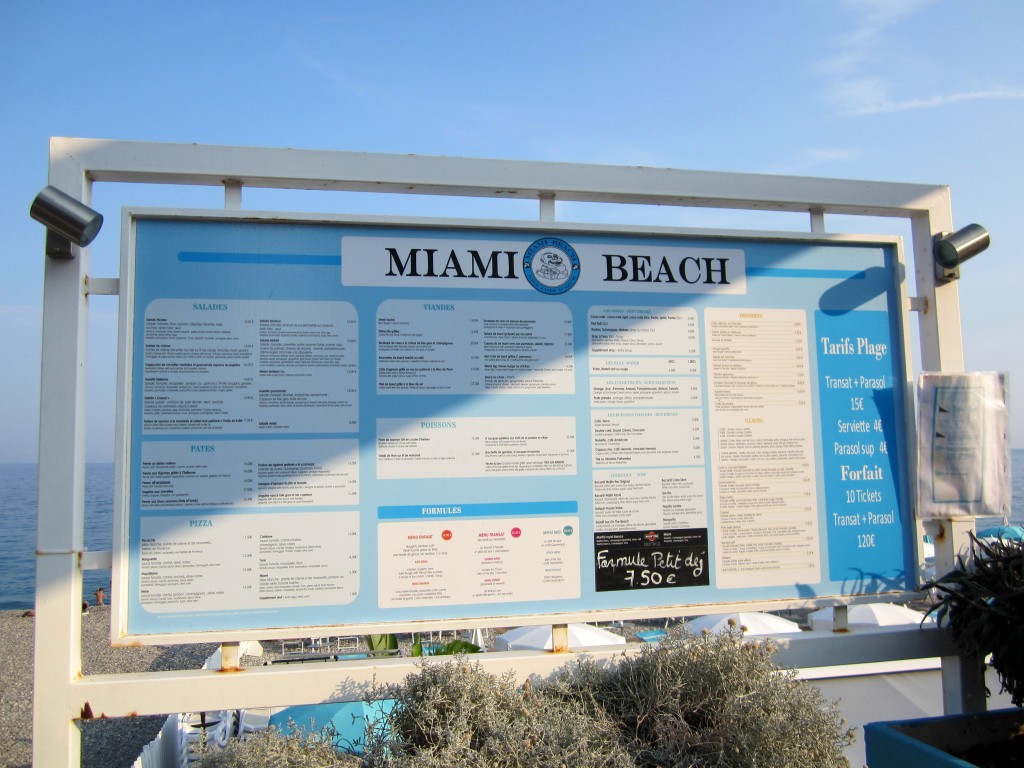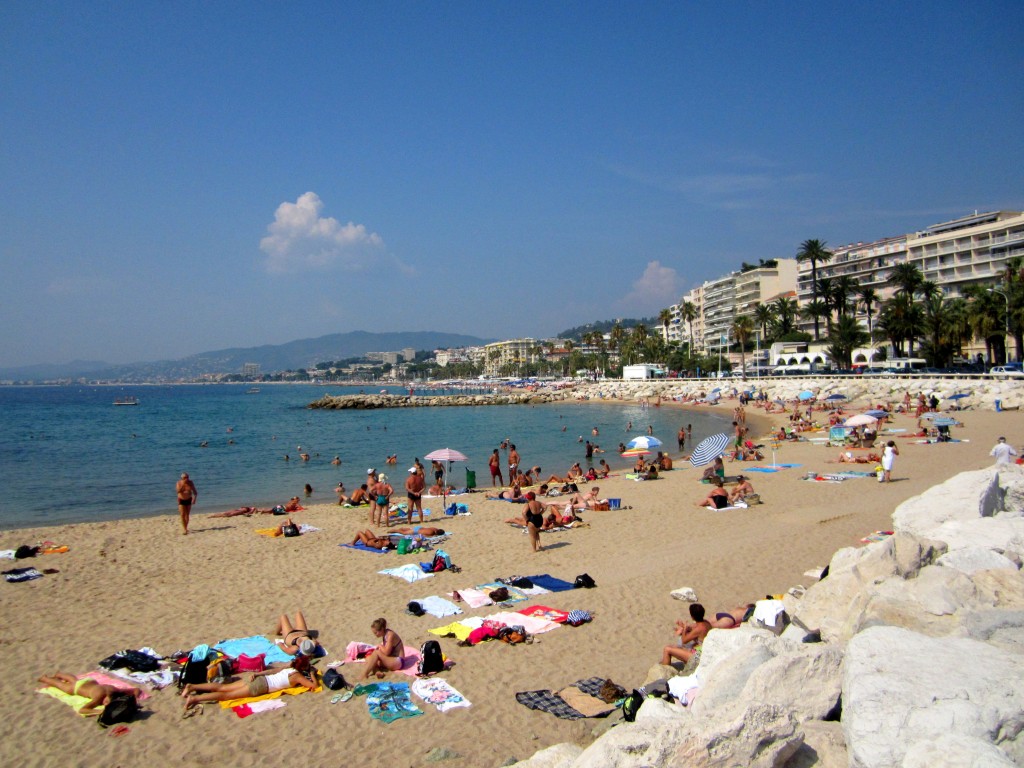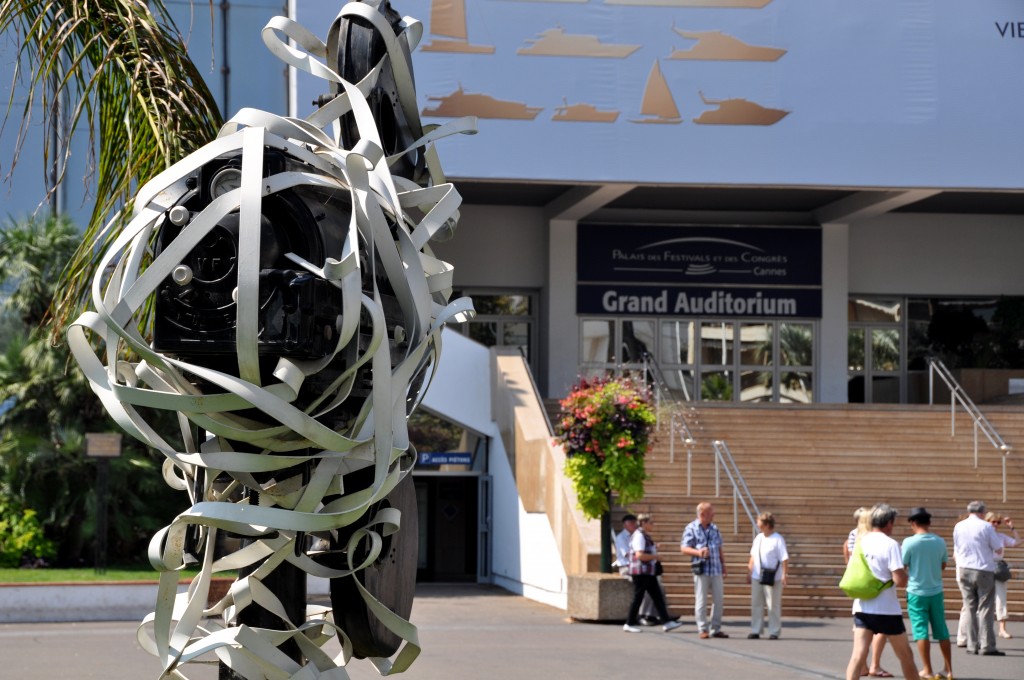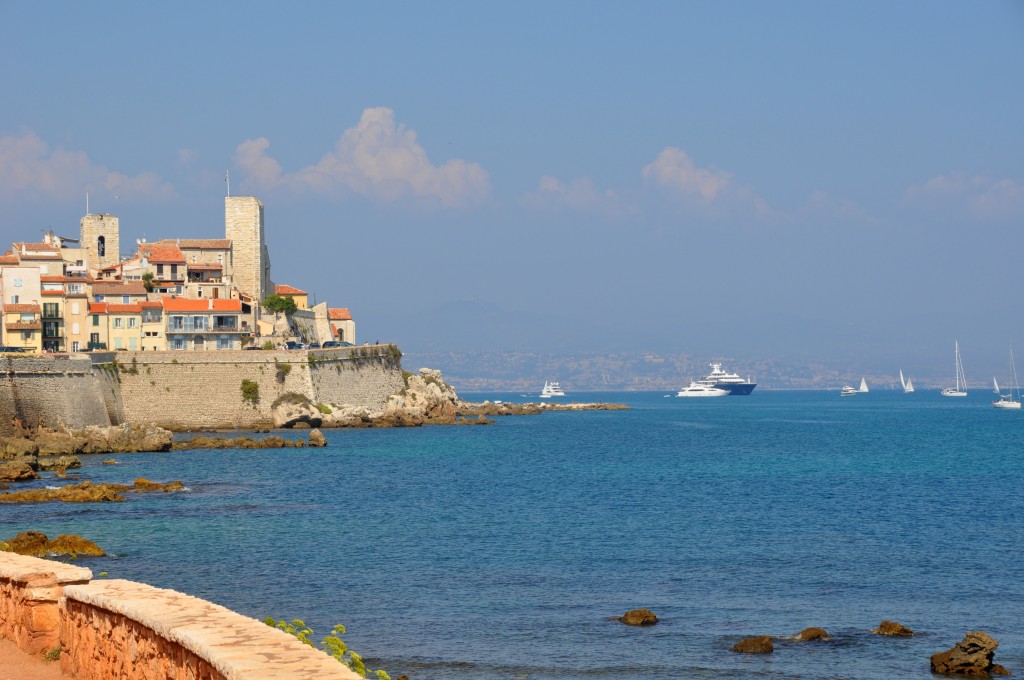Today, Joe and I spent the day enjoying the Christmas spirit and festivities of the French, in the Alsace region, which is just a few minutes across the border from us!
First stop, Sélestat. This town claims to have had, in 1521, the first Christmas tree in history. I feel like I have heard that claim in numerous other towns, but apparently the record is viewable at the Bibliothèque Humaniste.
 Apparently they also like pretzels as much as the Germans do!
Apparently they also like pretzels as much as the Germans do!
Our next stop was the town of Ribeauvillé, which just may be my new favorite French town. However, the focus here is not going to be on what a quaint little town Ribeauvillé is. Nope. Today’s emphasis is going to be on two critical elements of human existence: eating and peeing! Yeah!
Ribeauvillé was our lunch stop, and quite a lunch stop it was! The Christmas market was Medieval themed, but I’m not quite sure if all of our lunch options were medieval, or just French.
Here was the menu:
Lard and Pain. Sounds like something Chuck Norris would serve at his restaurant, if he had one! When it arrived, it was exactly as stated. Lard on bread. Looked like pain to me. I skipped it.
Then, we came across a huge fire, with something turning on the spit. Oh yeah, it was two huge boars. No mistaking what was on the menu here.
As we were walking around town, we noticed several pieces of tall wood that were just standing in the middle of the street, smoldering. They looked like total fire hazards to me, but no, they were personal bacon-smoking stations. I mean…lard-smoking stations. Bon appétit!
The Germans have a bad rap when it comes to vegetables – they basically don’t serve them. However, I must say, the Alsacians must have a phobia as well, based on our day. To prove my point, here is a Würst, stuffed with cheese, wrapped in bacon. It might come with some “pain”, I don’t know.
So, after lunch and drinks, nature began to call. We followed the signs to the public bathrooms, and this is what we found:
Gentlemen on the left, ladies on the right. Bucket filled with sawdust on the left, porta pot filled with sawdust on the right. While I was inside, I was looking at the sign on the door. Obviously, I couldn’t understand the French, but according to the pictures, the sawdust is composted at farms, after being fertilized by merry mead drinkers like us. I don’t know what kind of farms, but let’s hope it isn’t the ones that supply the vegetables for the Farmer’s Market!
The multi-language conversations that were being held outside these “green” porta pots were really interesting. So were the looks on the men’s faces when they realized what was going on. I wasn’t the only one who found it entertaining. One woman made her husband pose for a picture as he was walking out! To be completely honest though, they didn’t smell like a usual porta pot. In fact, they didn’t smell at all. Maybe the rest of the world should catch on.
Final stop: Riquewihr. Best part: huge cheese!

